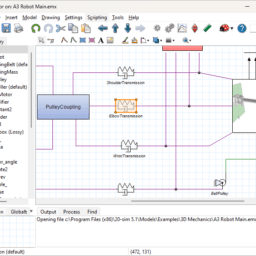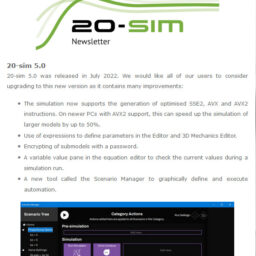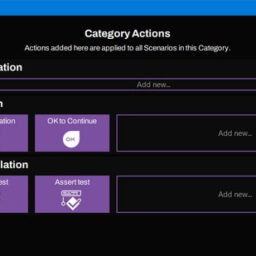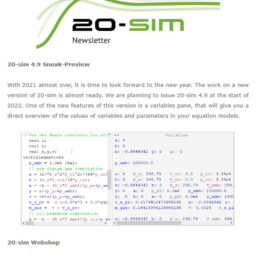Check out our latest software release of 20-sim 5.1
This version has many improvements that will help you edit models more easily.
What is 20-sim?
20-sim is modeling and simulation software package for mechatronic systems. With 20-sim you can enter models graphically, similar to drawing an engineering scheme. With these models you can simulate and analyse the behaviour of multi-domain dynamic systems and create control systems. You can even generate C-code and run this code on hardware for rapid prototyping and HIL-simulation.
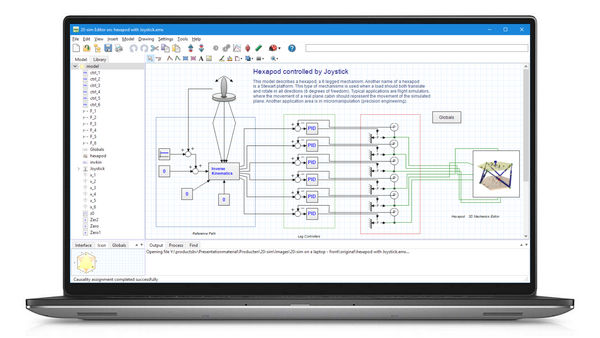
20-sim provides you with features that allow you to create models very quickly and intuitively. You can create models using equations, block diagrams, physics blocks and bond graphs. Various features help you to build your models, simulate them and analyse their performance.
The latest software upgrade is now available with many improvements. Download 20-sim 5.1 here.

Modeling
Models are built in the 20-sim editor. This editor contains a large model library with building blocks to help you to construct models. The model library contains many components such as block diagrams and bond graphs.

Simulation
The 20-sim simulator allows you to run models and show the results as plots and 3D animations. 20-sim has advanced simulation algorithms which allow you to run models in an efficient and accurate way.

Analysis
You can analyse your models using a number of toolboxes. Time domain allows you to run models while varying the parameters to find optimal values. Frequency domain allows you to linearise models and inspect their behaviour.

Export
20-sim fully supports FMI that allows you to exchange models with other packages. You can export models directly to Simulink or as C-code for the use on hardware like PLC’s, PC’s and embedded systems.
MODELING & SIMULATION SOFTWARE
With 20-sim, models can be created graphically, similar to drawing an engineering scheme. With these models, the behaviour of dynamic systems can be analyzed and control systems can be designed. 20-sim models can be exported as C-code to be run on hardware for rapid prototyping and HIL-simulation.
